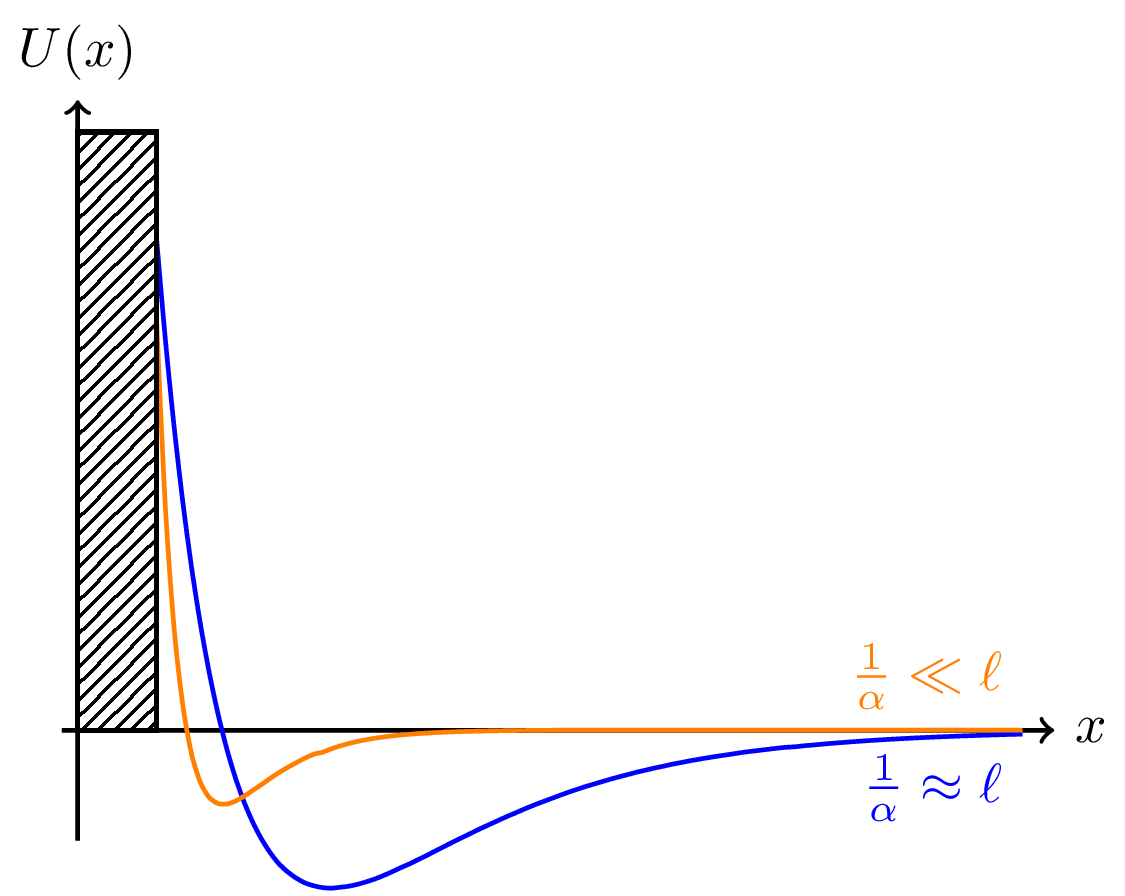Gas Pressure on Wall
Exercise illustration: Compute the pressure of an ideal gas in three dimensions upon a wall at $x = 0$ that attracts molecules at large distance and repels them at smaller distance. Let the force be given by the potential $U(x) = -A , e^{-\alpha x} + B , e^{-2 \alpha x}$, with $A,B > 0$.

Download
Code
gas-pressure-on-wall.typ (76 lines)
gas-pressure-on-wall.tex (27 lines)